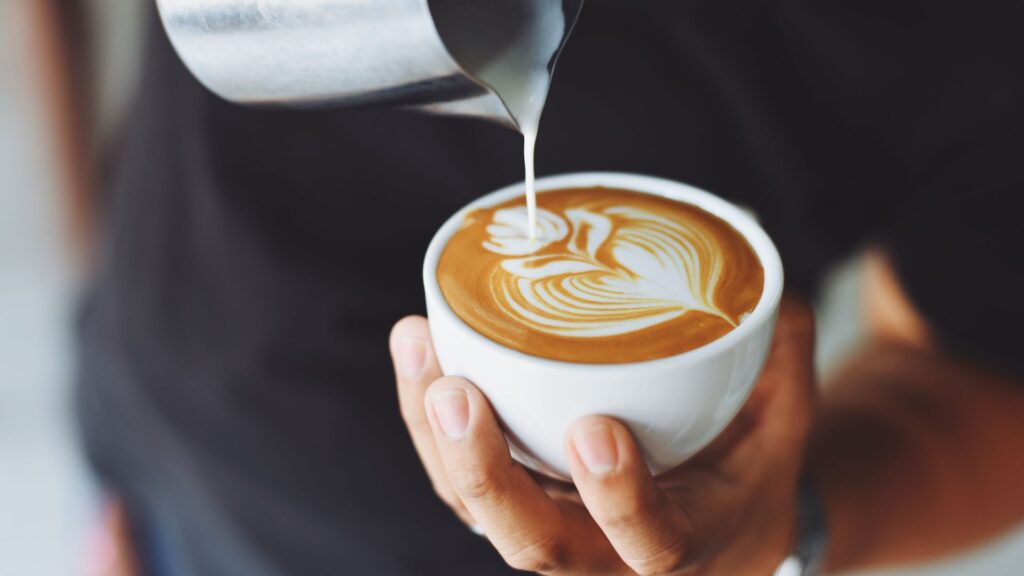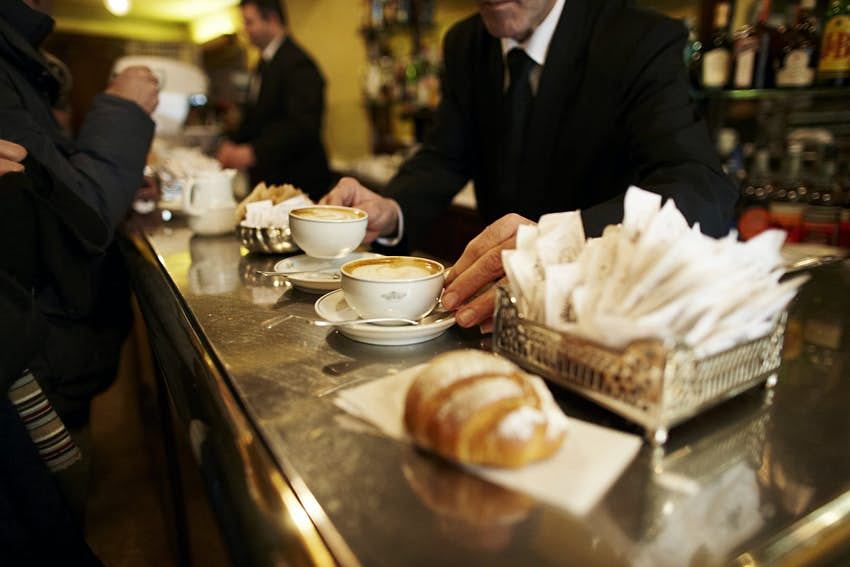ORIGIN

Coffee first arrived in Europe from the Muslim world during the 17th century. It was amazing and it amazed, with an exoticness that charmed Europeans, its stimulating effect and the fact that it made a welcome change from traditional alcoholic beverages. Establishments serving coffee began to open, providing an environment for wonderful social, cultural and political exchange and, within a century, coffee had become part of everyday life.
THE DISCOVERY OF COFFEE
It is not known exactly when coffee as a drink was discovered. However, we do know that the coffee plant originated in Ethiopia, where coffee beans were consumed either as a paste or as a drink, for their medicinal properties. The shrub was introduced to Yemen around the 14th century and it was then that the first coffee plantations were created. Muslim mystics and pilgrims appreciated coffee for its energising powers, so it travelled to Mecca. From that moment onwards, its success became unstoppable, bowling over Cairo, the Middle East and Constantinople, before arriving in Europe in the early 17th century. As expected, this new drink would come up against a few opponents. Religious clerics were suspicious and asked Pope Clement VIII to taste it. He allegedly declared that it would be a sin if only unbelievers were allowed to enjoy such a delicious drink. Like the pope, the privileged classes were charmed by coffee and quickly embraced its exoticism; ’turqueries’ were particularly fashionable at that time. Intellectuals appreciated it for its ability to help one stay alert and to think clearly. Unlike chocolate, which remained a luxury for the privileged for a long time, coffee, which was less-expensive, was adopted by all levels of society and welcomed into homes during the 19th century. A morning cup of coffee gradually replaced traditional broths or soups and became established as a great classic.
ESTABLISHMENTS SERVICNG COFFEE
The arrival of coffee was accompanied by a new trend as establishments serving coffee, just like the ones that existed in Constantinople and in Cairo, began to open all over Europe. They soon became meeting places, where people from a variety of backgrounds could get together, discuss and exchange ideas, without becoming intoxicated. In Paris, for example, Le Procope (which still exists) became a meeting place for artists and intellectuals – Montesquieu and Diderot were regular customers. The freedom of speech and the spirit of revolt which sometimes reigned in these establishments did not go unnoticed by the authorities. In London, cafés came to be considered dangerous and, in 1676, Charles II ordered their closure. However, as a result of public pressure, they reopened just a few days later.
THE ART OF MAKING COFFEE

Changes in the way coffee was made no doubt contributed to the drink’s growing success. When coffee arrived in Europe, water and ground beans were boiled together, in the Turkish style. However, the Viennese were unimpressed by its coarse texture and thus had the idea of filtering out the grounds. This proved an immediate hit and the idea of filter coffee makers soon developed. Pressurised coffee machines, using steam to moisten the grounds, arrived on the scene later and became equally as successful.
THE LEGEND OF ITS ORIGIN
An old tale tells the story of a young goat herder in Yemen, called Kaldi who was astonished to see his herd of goats become particularly excited when they ate certain red berries. He picked some of these berries and took them to the local monastery. The Prior used them to make a brew, which he drank, and found that he remained incredibly alert during evening prayers: thus coffee became a beverage. While the story may be historically dubious, it nevertheless proves interesting as it highlights one of coffee’s great attractions: its stimulating effect.
COFFEE TODAY

Coffee has become one of the most widely-consumed drinks in the world. With the arrival of take-away coffee, there was a danger that its flavour would become standardised. Yet, if anything, the opposite is true. Coffee has had to adapt to the traditions, tastes and age groups of consumers. Whether coffee is consumed inside or outside the home, it is constantly being reinvented with new flavours.
COFFEE IN ETHIOPIA

Drinking coffee in Ethiopia involves a special ritual and it generally serves as a pretext for a moment of conviviality. From the preparation of an area of ground to the final sip, every action and every step are codified with precision.
COFFEE IN ITALY

With the invention of the high-pressure machine, Italy introduced coffee with a new, unique flavour, which was to become a benchmark all over the world.








